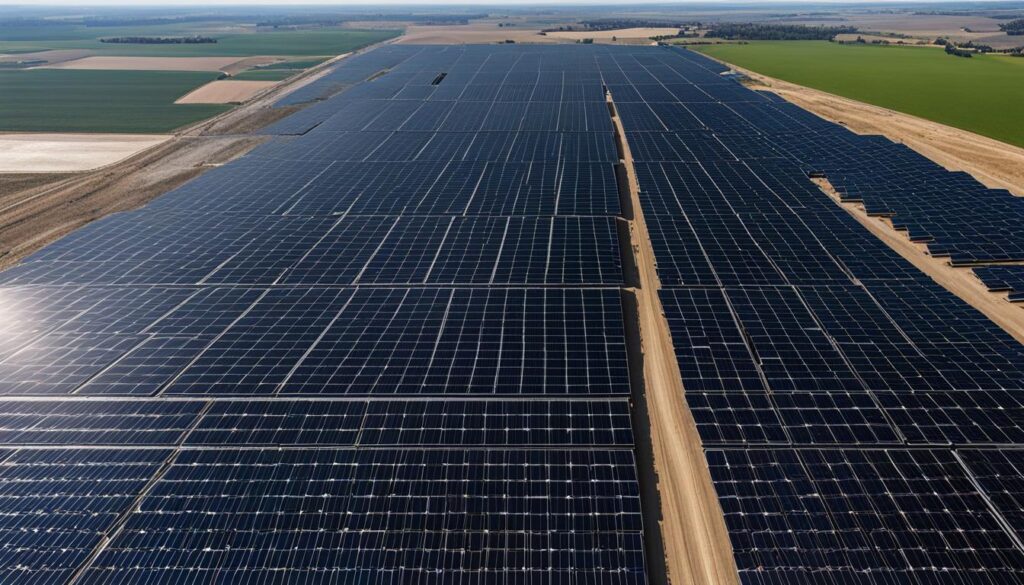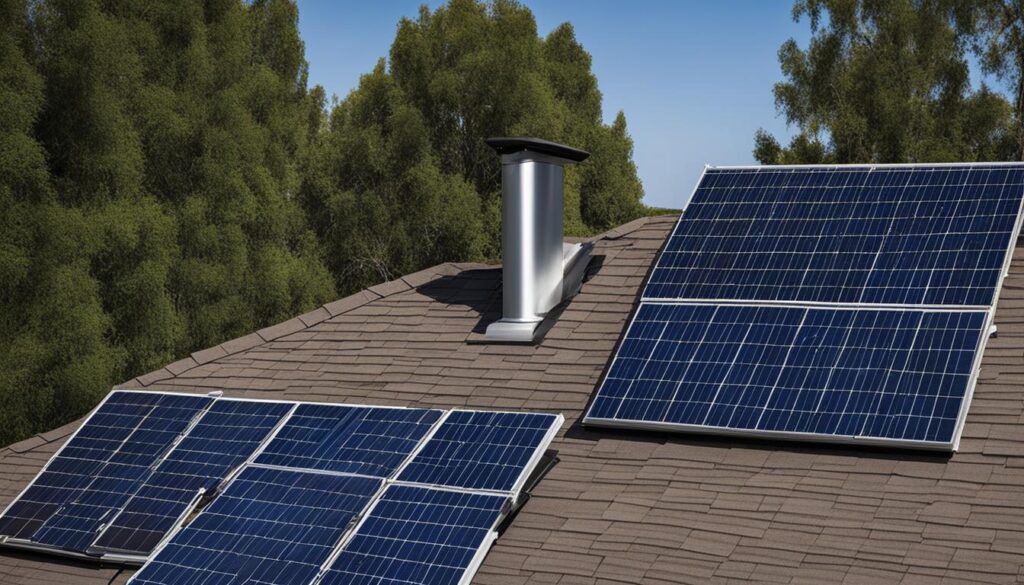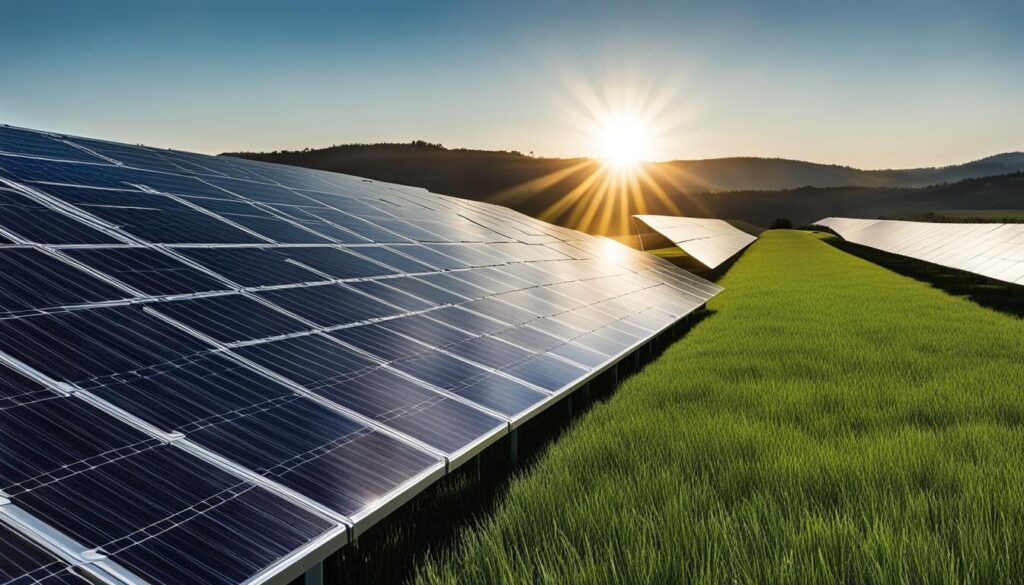Are you considering investing in solar panels for your home or business? Monocrystalline solar panels are a top choice for those seeking efficient and reliable energy solutions. With their high efficiency rates and long lifespan, monocrystalline panels offer numerous benefits that make them the preferred option for many.
Monocrystalline solar panels differ from other types of panels in their manufacturing process and composition. Made from silicon with a single, constant crystal structure, these panels are known for their uniform appearance and exceptional performance.
One of the key advantages of monocrystalline panels is their high efficiency in converting sunlight into electricity. With solar panel efficiency rates ranging from 15-20%, these panels can produce more power per square foot compared to other types of solar panels. This means you can generate more electricity even if you have limited roof space.
While monocrystalline panels may have a higher upfront cost compared to other solar panel options, their long-term benefits outweigh the initial investment. These panels perform better in warm weather, have a longer lifespan, and deliver optimal energy production. Additionally, their sleek and uniform appearance adds to the aesthetic appeal of your property.
Stay tuned to discover the superiority of monocrystalline solar panels, their efficiency milestones, and a comparison with polycrystalline panels in our upcoming sections. Gain insights into the cost and benefits of monocrystalline panels, helping you make an informed decision when choosing the best solar panel solution for your needs.
Key Takeaways:
- Monocrystalline solar panels offer high efficiency rates, ranging from 15-20%.
- They can produce more power per square foot, making them space-efficient.
- Monocrystalline panels perform well in warm weather and have a longer lifespan.
- Despite the higher cost, monocrystalline panels deliver superior performance and aesthetics.
- Stay tuned for more information on efficiency milestones and comparisons with polycrystalline panels.
Understanding the Superiority of Monocrystalline Solar Panels
Monocrystalline solar panels are renowned for their exceptional efficiency and performance in converting sunlight into electricity. These high-quality panels are manufactured using the Czochralski process, a groundbreaking method of crystal growth that revolutionized the production of monocrystalline silicon for solar cells.
The Czochralski process, discovered by Jan Czochralski in 1918, involves creating a cylindrical ingot of single-crystal silicon. This ingot is then sliced into thin wafers, which serve as the building blocks for monocrystalline solar panels. The uniform crystal structure of monocrystalline silicon ensures consistent and reliable performance.
Monocrystalline solar panels have achieved remarkable milestones in efficiency, with some panels surpassing an efficiency rate of 20%. This makes them one of the highest efficiency solar panels available in the market. The high efficiency of monocrystalline panels means that they can generate more power per square foot, making them space-efficient and ideal for installations with limited space.
When comparing monocrystalline panels to polycrystalline panels, the former outperforms the latter in terms of efficiency, especially in low-light conditions. Monocrystalline panels have a higher efficiency range of 15-20%, while polycrystalline panels typically range from 13-16% efficiency. This performance advantage makes monocrystalline solar panels the preferred choice for maximizing energy production and reducing reliance on traditional energy sources.

| Monocrystalline Solar Panels | Polycrystalline Solar Panels |
|---|---|
| Higher efficiency range of 15-20% | Lower efficiency range of 13-16% |
| More expensive to manufacture | Less expensive to manufacture |
| Uniform appearance | Varied appearance due to multiple crystal fragments |
In summary, monocrystalline solar panels offer superior efficiency and performance due to their advanced manufacturing process and single-crystal structure. While they may come at a higher solar panel cost, their long-term benefits make them a worthwhile investment for those seeking the highest efficiency solar panels.
Monocrystalline vs Polycrystalline Solar Panels
Monocrystalline vs Polycrystalline Solar Panels :- When it comes to choosing the right solar panels for your energy needs, two popular options are monocrystalline and polycrystalline solar panels. Each type has its own set of characteristics and advantages. Let’s take a closer look at the differences between these two options.
Monocrystalline Solar Panels: These panels are made from a single crystal structure, typically silicon, which gives them a sleek and uniform appearance. Monocrystalline panels are known for their high efficiency rates, ranging from 15-20%. This means they can convert a larger percentage of sunlight into usable electricity compared to polycrystalline panels. The superior efficiency of monocrystalline panels makes them an excellent choice for maximizing energy production in limited space.
Polycrystalline Solar Panels: Unlike monocrystalline panels, polycrystalline panels are made from multiple crystal fragments, resulting in a more mottled appearance. While they have slightly lower efficiency rates, typically ranging from 13-16%, polycrystalline panels are generally more cost-effective. The manufacturing process for polycrystalline panels is simpler and less expensive, making them a popular choice for budget-conscious consumers.
When deciding between monocrystalline and polycrystalline solar panels, several factors need to be considered. Your budget, available space, and desired efficiency level will play important roles in determining the best option for your specific needs. If space is limited and efficiency is a priority, monocrystalline panels may be the ideal choice. However, if cost-effectiveness is a key consideration, polycrystalline panels may be a better fit.

| Solar Panel Type | Crystal Structure | Efficiency Range | Cost-effectiveness |
|---|---|---|---|
| Monocrystalline Solar Panels | Single crystal structure | 15-20% | Higher initial cost |
| Polycrystalline Solar Panels | Multiple crystal fragments | 13-16% | Cost-effective |
Monocrystalline Solar Panels: Balancing Cost and Benefits
While monocrystalline solar panels offer superior efficiency, they come at a higher cost compared to other types of solar panels. The higher cost is predominantly due to the more complex manufacturing process and the use of high-quality silicon. Monocrystalline solar panel manufacturers focus on delivering high-quality panels that offer exceptional performance and durability.
Despite the higher upfront cost, monocrystalline panels offer long-term savings in terms of energy production and reduced electricity bills. Their high efficiency allows for maximum energy production, helping to offset the initial investment over time. Additionally, monocrystalline panels have a longer lifespan compared to other types of solar panels, further increasing their cost-effectiveness.
When choosing monocrystalline solar panels, it is important for consumers to consider the long-term benefits and potential return on investment. While the upfront cost may be higher, the long-term energy savings and durability outweigh the initial expense. Investing in monocrystalline solar panels ensures efficient energy production, reduced reliance on conventional energy sources, and a sustainable future.
To illustrate the balance between cost and benefits, refer to the table below:
| Monocrystalline Solar Panels | Other Solar Panels | |
|---|---|---|
| Efficiency | High (15-20%) | Lower (13-16%) |
| Lifespan | Longer | Shorter |
| Energy Production | Higher | Lower |
| Electricity Bills | Reduced | Higher |
As seen in the table, monocrystalline solar panels outperform other types of solar panels in terms of efficiency, lifespan, energy production, and reduced electricity bills. These factors contribute to long-term cost savings and make monocrystalline panels a worthwhile investment for those looking to harness clean and sustainable energy.
Conclusion
Long-Term Sustainability of Monocrystalline Solar Panels
Monocrystalline solar panels offer a long-term sustainable solution for energy production. Their high efficiency and durable construction make them a reliable choice for homeowners and businesses alike. The high efficiency of monocrystalline panels allows for maximum energy production, reducing the reliance on conventional energy sources and minimizing carbon emissions. This not only contributes to a greener environment but also helps in achieving greater energy independence.
Monocrystalline Solar Panels Advantages and Challenges
Monocrystalline solar panels advantages that make them a popular choice. Firstly, their superior efficiency ensures that maximum energy is generated from the available sunlight, making them highly efficient in converting solar energy into electricity. Secondly, monocrystalline panels are space-efficient, meaning they can produce more power per square foot compared to other types of panels, making them ideal for installations with limited space.
However, monocrystalline panels do have their challenges. The higher upfront cost is one such challenge that many potential buyers consider. While the initial investment may be higher, it is important to factor in the long-term benefits these panels provide, such as reduced electricity bills and increased energy independence. Additionally, the uniform appearance of monocrystalline panels may not suit every aesthetic preference. However, when it comes to the overall performance and efficiency, monocrystalline panels are unmatched.
In conclusion, monocrystalline solar panels offer a sustainable and efficient solution for clean energy production. Their high efficiency and durability, coupled with the benefits of reduced carbon emissions and long-term savings, make them a smart choice for anyone looking to invest in solar energy. While they may come with a higher initial cost, the long-term advantages and positive impact on the environment make monocrystalline panels a worthwhile investment for a brighter and greener future.
FAQ
What are monocrystalline solar panels?
Monocrystalline solar panels are a type of solar panel known for their high efficiency in converting sunlight into electricity. They are made of silicon with a single, constant crystal structure, resulting in a uniform appearance.
How efficient are monocrystalline solar panels?
Monocrystalline solar panels typically have a higher efficiency range of 15-20%, allowing them to produce more power per square foot compared to other types of solar panels.
What are the advantages of monocrystalline solar panels?
Monocrystalline solar panels perform better in warm weather, have a longer lifespan, and offer space efficiency due to their high efficiency. They are also favored for their superior performance and aesthetics.
What is the difference between monocrystalline and polycrystalline solar panels?
Monocrystalline panels are made from a single crystal structure, while polycrystalline panels are made from multiple crystal fragments. Monocrystalline panels have higher efficiency rates (15-20%) compared to polycrystalline panels (13-16%).
Why are monocrystalline solar panels more expensive?
Monocrystalline silicon solar panels are more expensive to manufacture due to the complex manufacturing process and the use of high-quality silicon. However, their long-term savings in energy production and reduced electricity bills offset the higher upfront cost.
Are monocrystalline solar panels sustainable?
Yes, monocrystalline solar panels are sustainable in the long term. Their high efficiency allows for maximum energy production, reducing reliance on conventional energy sources and minimizing carbon emissions. Additionally, the use of high-quality materials and precise manufacturing processes ensures their longevity.

